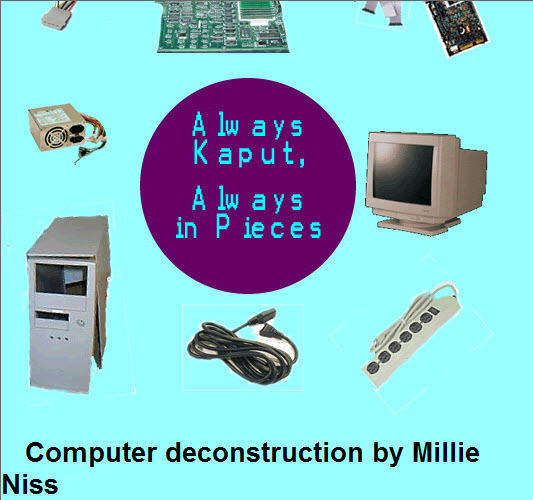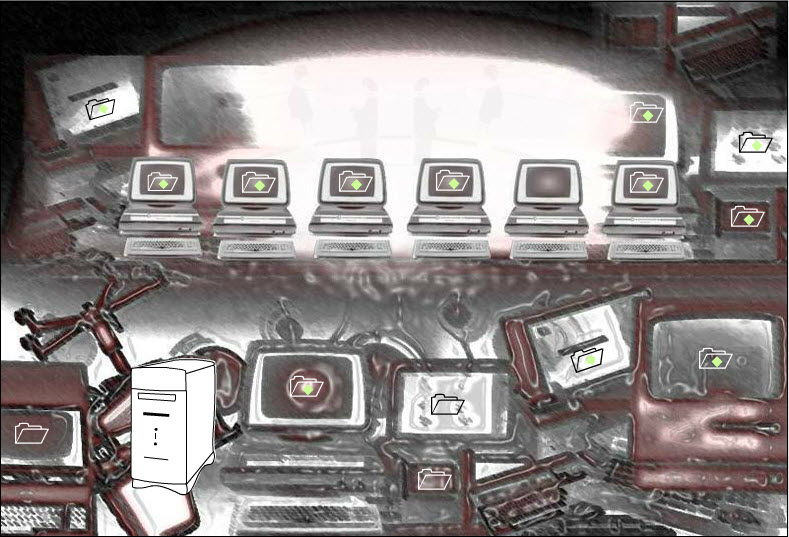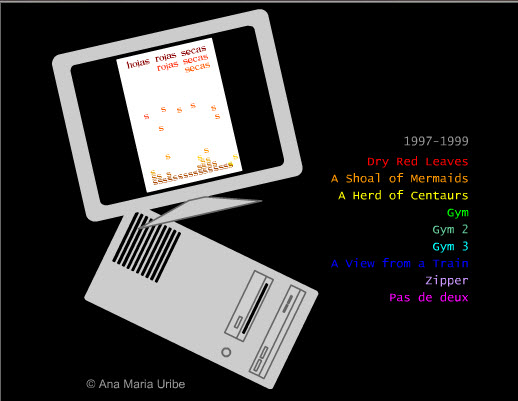
Marjorie Coverley Luesebrink, The Quaker Oat Box – Infinite Regress
|
Millie Niss
did a take on this. And, a
few years ago, Regina Celia Pinto inaugurated a project that invited
practitioners to profile their computer hardware history – a piece
which, in its depiction of the hardware of that present, now looks
suspiciously ancient. And, while
Uribe’s work itself seems fresh – the computer that created it
manifestly does not! Of course,
the look of these old
computers was accompanied by the limitations of the technology they
employed – limited bandwidth, minimal color display, and elementary
navigational features. Even
so, it would seem that the authoring software may have been even more
influential in the creation of screen nostalgia.
In the early
days before the widespread use of html, many authors utilized in-hand
delivery systems - floppy disk, zip drives, and CD-ROM.
Stand-alone media, coupled with authoring software, provided a
useful creative environment and delivery system for poetry and narrative
works, but more importantly allowed for the use of larger-sized files
(hence better graphics resolution, navigation options, and textual
variety). |


Regina Celia Pinto's Computer Museum

Ana Maria Uribe's fiction screen